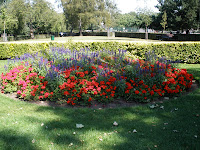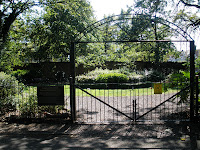Bruce Castle is a misnomer, a historical cheat. It is a manor house in Tottenham in London and was just plain Lordship House for most of its existence. Trying to live up to a grand name, it does have some history and even a resident ghost, as well as quite a few historical questions that need to be worked out.
If you were expecting Bruce Castle to be in Scotland because of Robert the Bruce, then you are right about the tenuous link, but not about the location. At the time Robert the Bruce seized the throne of Scotland to become King Robert I, part of the manorial estate of Tottenham belonged to him. He forfeited all claims to English lands and titles with taking the Scottish crown, and they reverted to the king of England.
Archaeological excavations done in 2006 by the Museum of London showed that a medieval manor house had stood in the grounds of today’s Bruce Castle Park. But it is very doubtful that this structure would have had any connection with the Bruce family and more than doubtful that the Bruce ever stayed there. The manor house was named Lordship House well into the 17th century when the name was changed to Bruce Castle by its owner Henry Hare, Baron Coleraine.
The earliest existing structure of note is the Tudor Tower which stands completely detached from the manor house building. The 2006 excavations showed that it continues quite some way into the ground. The tower was probably a dovecote.
The house itself, as it can be seen today, is a hodgepodge of styles, as every consecutive owner has remodeled it, and usually extensively so. What appears as the main house today was probably only part of a courted manor house. In the 17th century, two wings were added to the structure, one of which was demolished in the 19th century. The facades were remodeled several times. Remodeling meant that the main entrance moved around the building each time to the new front.
The core of the present building is commonly believed to have been built in the time of Henry VIII, as it is mentioned as the place of a meeting between the king and his sister, Margaret Queen of Scots. The house and estate kept changing owners at an astonishing rate. In the 17th century, it belonged to the Earl of Dorset and who leased it to the husband of his mistress. Due to the Earl's gambling habits, it had to be sold to pay off debts. Hugh Hare had inherited large amounts of money from his merchant great-uncle. He bought Lordship House to enter the select circle of landed gentry. Renaming it Bruce Castle was part of his social upward movement.
Hugh Hare’s mother was a widow and got married to the Earl of Manchester. Hugh married one of the Manchester daughters from the Earl’s first marriage. With these connections securely in place, he was ready to enter court and acquire the title of Baron Coleraine. His connections at court and his support of the king put him on the wrong side during the Civil War. His house at Totteridge and Longford Castle were seized by Parliamentary troops. They were returned to him after the Restoration. Lord Hugh is still remembered for choking on a turkey bone while laughing. It is apocryphal that his laughter was caused by the news of the restoration of the monarchy, as he died at Totteridge in 1667. The Restoration took place in 1660.
His son Henry married Constantia Lucy after having first been engaged to Sarah Alston who went on to marry the Duke of Somerset instead. Rumor goes that the connection between Henry and Sarah remained very close. They remained so close in fact, that Constantia committed suicide and haunts the house to these days. Her demise came in handy as it allowed Henry to marry the meanwhile widowed Sarah.
In the 19th century, the house was converted into a school under headmaster Sir Rowland Hill. Hill later became head of the General Post Office where he introduced the world’s first postage stamp. The school was highly progressive in several ways. It propagated a radical new curriculum teaching foreign languages, sciences, and engineering. It also held to the principle that the teacher should not just impart information, but instill a desire to learn in the pupil. This principle is still too advanced for British schools and teachers alike. When the school closed at the end of the 19th century, the local council acquired the house. In 1906, it was opened to the public as a museum.
Further reading
What's a Dovecote?
If Short on Facts, Then Invent
The Head in a Glass Casket









No comments:
Post a Comment